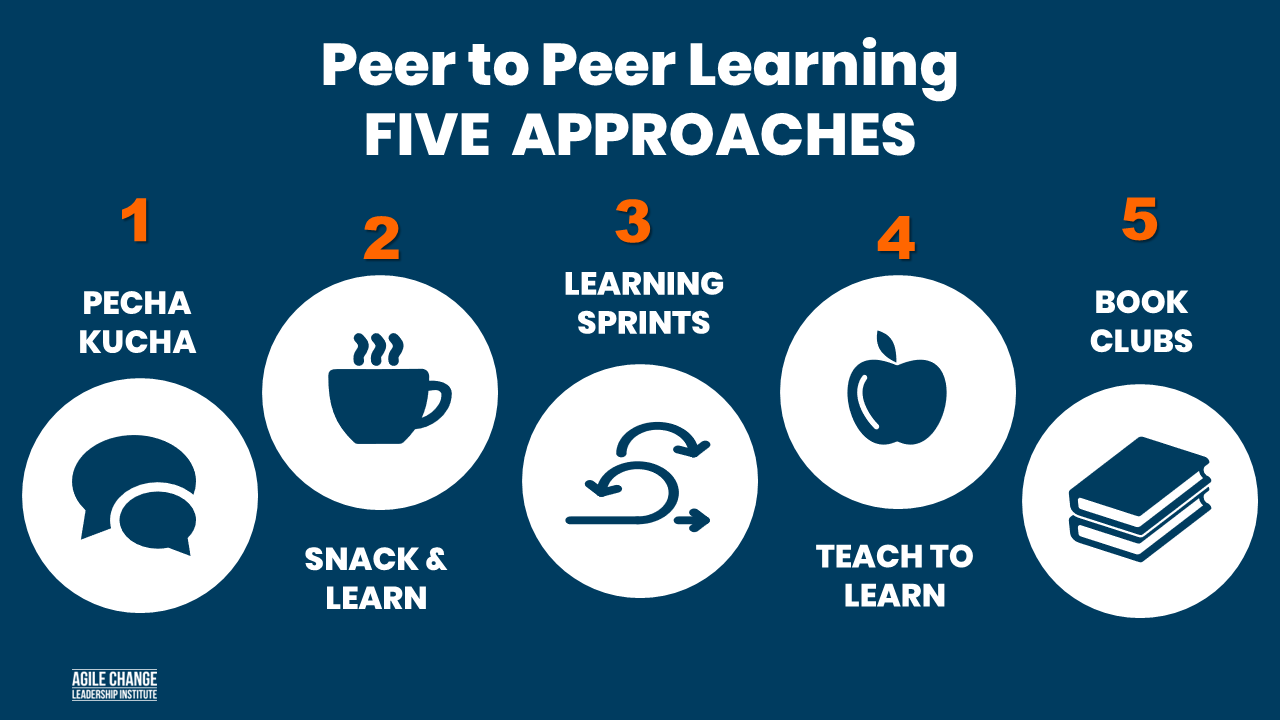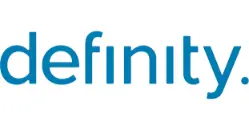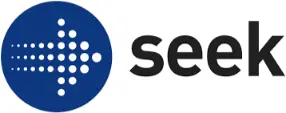Have you tried peer-to-peer learning? Over here, at the Agile Change Leadership Institute, we know that new ways of working mean new ways of learning. And one of those new ways is learning with and from your team members. Something magical happens when you learn with your peers, or with others. This ‘social learning’ approach is not an entirely new idea; it’s just that it’s not done enough.
In the French restoration period in the early 1800’s, the French Ministry of Education introduced peer-to-peer learning in the form of ‘mutual schools’ as a short-term solution to a teacher shortage.
In these schools, the students learned to read and write from older students and completed a six-year curriculum in under three years.
Success, ahead of its time, can be both a blessing and a curse. At that point in time, the success of peer learning was regarded as a threat to order and respect for traditional teaching. The learning model that was borne out of necessity wasn’t to survive the perceived threat to conventional education and authority. But we can learn from this and tap into the power of peer-to-peer learning at work.
We’ve seen the concept of peer-to-peer or social learning defined online as as ‘participation with others to make sense of new ideas’ is just how our brains are designed to learn. In 2011, Jeff Brazil positioned peer-to-peer learning as a mode of “learning for everyone, by everyone, about almost anything. So there’s a fair bit of license to play with the idea!
Here’s five approaches that have proven success in creating peer-to-peer learning:
Pecha Kucha & Lightning Talks
A lightning talk lasts for no more than five minutes, is often delivered without slides and is an effective way for team members to report back on an event they’ve attended. In a conference setting, lightning talk slides are often set to move every 15 seconds for discipline to stay on topic and on time. Similarly, pecha kucha, the Japanese phrase for ‘chit-chat’, is known as the 20×20 presentation, where 20 slides which ideally feature more images than text, are each shown for 20 seconds, making the duration six to seven minutes.
These short peer-to-peer presentations build a climate of psychological safety across organisational silos while enabling employees to shine and self-actualise. This unlocks human potential. When team members attend a formal learning event, ask them to share their key learnings with their peers, either as a lightning talk or pecha kucha, or present a lunchtime session that is longer in duration.
Snack and Learn sessions
We used to hear a lot about ‘lunch and learn’ sessions. As research continues to support the notion that our attention spans are decreasing while we continue to crave new information, shorter and sharper sessions are favoured. Microlearning, which means a short and focussed piece of learning of less than 15 minutes, is the ideal way to address this. Shorter learning episodes ease the cognitive load of longer training events that deliver volumes of information.
This is the ideal forum for your peers to share a skill, knowledge, or expertise with others. Schedule your ‘snack and learn’ sessions for around 20 to 30 minutes. Advise the ‘presenter’ to keep the session to a maximum 20 minutes to allow some time for questions and discussion. Or your ‘snack and learn’ session could comprise two pecha kucha episodes.
Learning Sprints
This one is popular with teams who are enrolled in our Agile Change Manager certificate program. When peers are enrolled in a learning program, they schedule learning sprint meetings to review content, share their learnings and key insights, especially reflections on experiments carried out. This supports an agile learning culture that values iteration, prototyping, testing and learning in a safe environment.
Teach to Learn
The motivation to learn is accelerated when employees are invited to share their key insights from what they’ve recently learned from a training course or conference. This approach is very relevant to new ways of working where co-creation, collaboration, connection and autonomy are highly valued.
Book Clubs
Take turns among team members to nominate a book and lead the discussion on a publication that connects with your work. We have created Book Club Questions for The Agile Change Playbook to get the discussion going. Reach out to us at [email protected] if you’d like a copy.

We often overlook the skills and expertise that we have right in front of us.
- Peer-to-peer learning is about employees sharing what they know or are passionate about with colleagues. There are other benefits too:
- Promotes trust and psychological safety in the team
- Encourages people to shine and share by unlocking potential
- Maintains a learning momentum with a test and learn approach
- Connects people across business units and learn beyond their own teams
- Builds employees presentation skills
- It’s fun!
Here’s a couple of tips ‘from the trenches’ to further support your activities:
- Make it enduring:
Record your ‘snack and learn’, teach to learn, and pecha kucha sessions so they can be shared across locations and watched again. - Spread the word:
Post photos of your sessions on your Enterprise Social Networks / Teams or Slack channels to spread the news and showcase your practices. Watch the contagion grow!
Conclusion
Organisations know that learning fast is the new superpower to remain future-fit. New ways of working are shifting expectations and ways in which we collaborate and learn. Now is the time for organisations to think differently about building an agile learning culture that leverages these trends. Peer-to-peer learning is the way to go – it ticks the boxes and helps build an agile learning culture.
Educational alternatives: different schools, colleges and high schools, The Directory Guide, 1 October 2019, <http://ecolesdifferentes.free.fr/ensorcellementscolaire.htm>
Jeff Brazil, May 23, 2011, P2PU: Learning for Everyone, by Everyone, about almost Anything


































